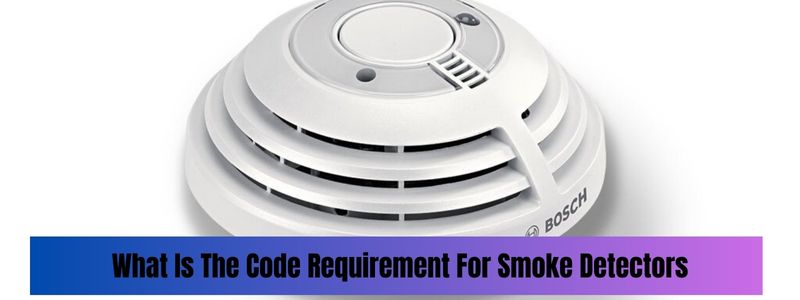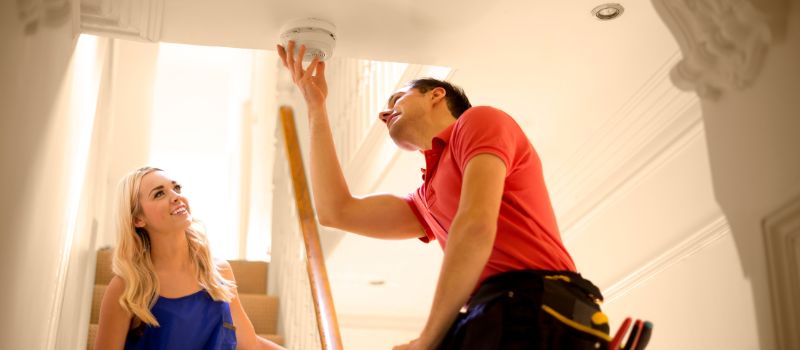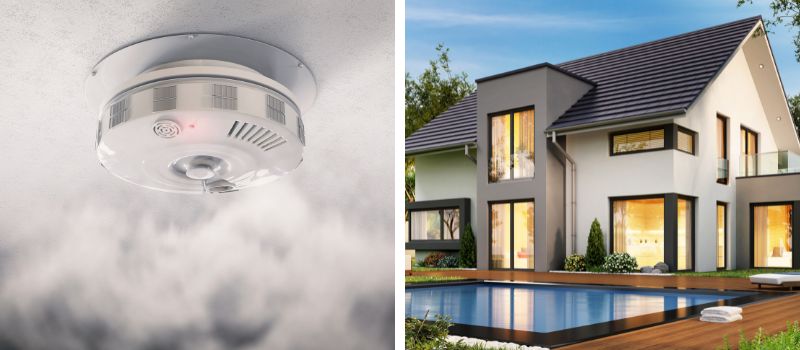Heat detectors are a crucial component of any fire protection system, as they detect rapid increases in temperature and signal an alarm to alert building occupants and authorities. While it’s important to install heat detectors correctly, many people wonder whether it’s safe to mount them on walls.
In this article, we’ll explore the benefits and considerations of wall-mounted heat detectors to help you make an informed decision.
Can you mount a heat detector on a wall?
Heat alarms need to be put on the wall or the ceiling. We advise installing a heat alarm in any location that could experience extremely high temperatures, such as an attic or garage.
Benefits of Wall-Mounted Heat Detectors:
Wall-mounted heat detectors have several advantages over other mounting options, including:
- Improved Detection: Wall-mounted heat detectors can detect heat faster than ceiling-mounted detectors in certain situations, such as fires that start low to the ground or close to walls. This is because heat rises, so a ceiling-mounted detector may not pick up on changes in temperature until they reach a certain height.
- Better Coverage: By mounting heat detectors on walls, you can improve coverage in areas that are difficult to reach or have obstructions. This can include areas near HVAC vents, tall furniture, or other obstacles that may block the view of ceiling-mounted detectors.
- Aesthetically Pleasing: Wall-mounted heat detectors can be less obtrusive than ceiling-mounted detectors, which can improve the overall appearance of a space.
Considerations for Wall-Mounted Heat Detectors:
While there are several benefits to wall-mounted heat detectors, it’s important to consider some potential challenges and limitations:
- Placement: Wall-mounted heat detectors should be placed at least 4 inches from the ceiling and any corners, to avoid false alarms and ensure accurate detection.
- Interference: Wall-mounted heat detectors may be more susceptible to interference from nearby objects, such as curtains or furniture, that can block or redirect heat. Be sure to consider the layout of the room and any potential obstacles before installing a wall-mounted detector.
- Compatibility: Not all heat detectors are suitable for wall mounting. Check the manufacturer’s recommendations and specifications before installing a detector on a wall.
Installation Tips for Wall-Mounted Heat Detectors:
If you decide to install a wall-mounted heat detector, follow these tips to ensure a safe and effective installation:
- Choose the Right Location: Carefully consider the placement of the detector to ensure optimal coverage and avoid false alarms. Wall-mounted detectors should be placed in areas where there is a high risk of fire, such as kitchens, garages, or near electrical equipment.
- Follow Manufacturer Instructions: Always follow the manufacturer’s instructions for installation, placement, and wiring. Improper installation can result in false alarms or failure to detect a fire.
- Hire a Professional: If you’re unsure about the installation process or want to ensure the highest level of safety and effectiveness, consider hiring a professional to install your wall-mounted heat detector.
Conclusion:
Wall-mounted heat detectors can be a safe and effective option for fire protection, offering improved detection, better coverage, and a more aesthetically pleasing appearance. However, it’s important to consider the placement, interference, and compatibility of your chosen detector before installation. By following manufacturer instructions and seeking professional help if needed, you can enjoy the benefits of wall-mounted heat detectors with confidence.
FAQ
Can I replace a ceiling-mounted heat detector with a wall-mounted one?
Yes, but it’s important to consider the placement and compatibility of the new detector. Make sure to follow manufacturer instructions and consult with a professional if needed.
What type of wall should I mount my heat detector on?
Any wall can work, but avoid mounting the detector on exterior walls or near windows, as these areas may experience temperature fluctuations that can trigger false alarms.
Can I install a wall-mounted heat detector in a bedroom?
Yes, a wall-mounted heat detector can be installed in a bedroom for added fire protection. Be sure to follow placement guidelines and consider the proximity to potential heat sources.
Can a wall-mounted heat detector detect smoke?
No, a heat detector is designed to detect rapid increases in temperature, not smoke. For smoke detection, a smoke detector should be installed in addition to or instead of a heat detector.
How often should I replace my wall-mounted heat detector?
It’s recommended to replace heat detectors every 10 years, or according to the manufacturer’s specifications. Regular testing and maintenance can also help ensure proper functioning.
Read more:
- What Is The Coverage Area Of Heat Detector As Per NFPA?
- How Close Can A Heat Detector Be To A Wall?
- How Do You Calculate Heat Detector Spacing?
- What Is The Maximum Distance Between Heat Detectors?

Edward’s expertise in smoke detectors is particularly noteworthy. He has conducted extensive research on the latest advancements in smoke detector technology and has worked closely with manufacturers to develop cutting-edge products that can detect fires more accurately and quickly.




